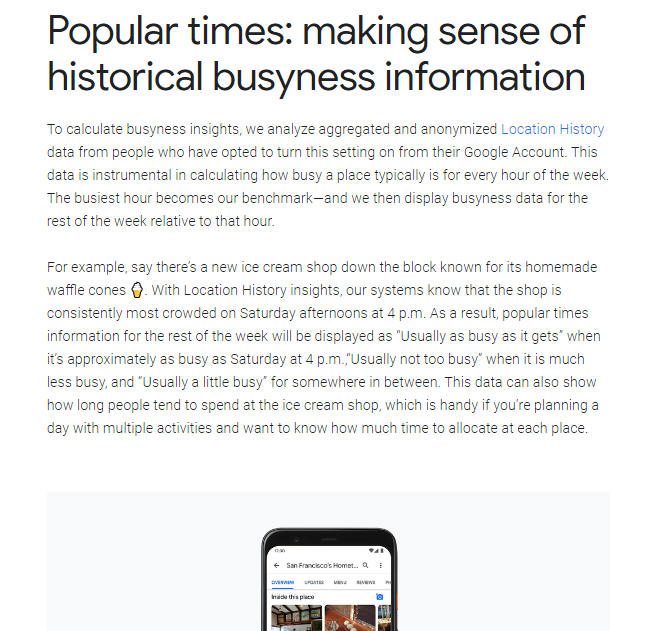Explaining The New Live Business Upgrade
-

Aaron Gray
- Blogs
-
 November 06 , 2020
November 06 , 2020 -
 2 min read
2 min read
Google makes the Live Busyness feature more efficient
Back in 2016, Google launched a feature that shows how busy a place usually gets. When you click on a business on Maps, it will display a simple graph that shows you the best times to go there, and what times to avoid, based on historical data.
Thanks to the new upgrade, you will be able to see an overview of how busy every single store on the map is, without even clicking on them individually.
This update is hoped to make a significant impact on everyone’s lives and their decisions—especially how they plan their day to day. Say you’ve just finished shopping and it’s time for lunch. You’re really craving Chipotle but you can see that it’s much busier than usual right now, so you settle for a burger somewhere quieter.

The health crisis we are in has given us new priorities. As of today, it’s crucial to avoid crowds and social gatherings in almost every country around the world. We are reluctant to frequent busy spots and shops no matter how much we love them.
That’s why there has been a 50% increase in the usage of this feature. The update came in at the perfect time.
Beside stores and shopping spots, this feature is also available for public places, beaches, parks, etc. This means you’ll be able to see it all over Maps.
How can we get exact, live information so fast?
Enter Duplex Conversational technology.
Modern problems require modern solutions. The offline busy feature and the unreliable, outdated business hours simply doesn’t cut it in the world of COVID.
As such, Google has resorted to using something called Duplex Conversational technology. In plain English, this calls businesses and automatically updates their business hours and adds it to Maps as well as Search.
Not only that, but it also adds other details and essential information such as takeout only, no contact delivery, outside seating only, etc.
Subscribe to Our Blog
Stay up to date with the latest marketing, sales, service tips and news.
Sign Up
"*" indicates required fields


